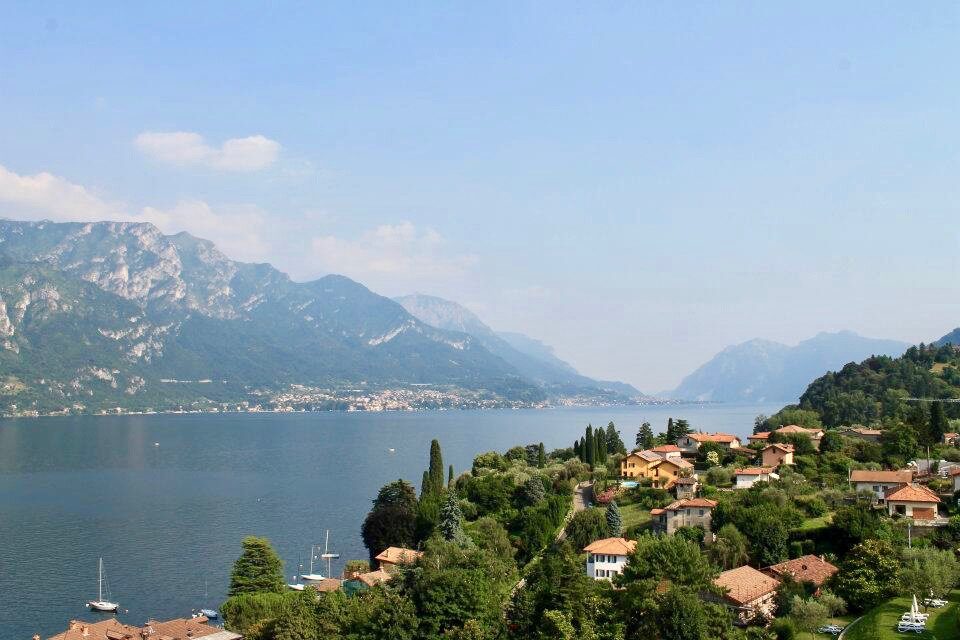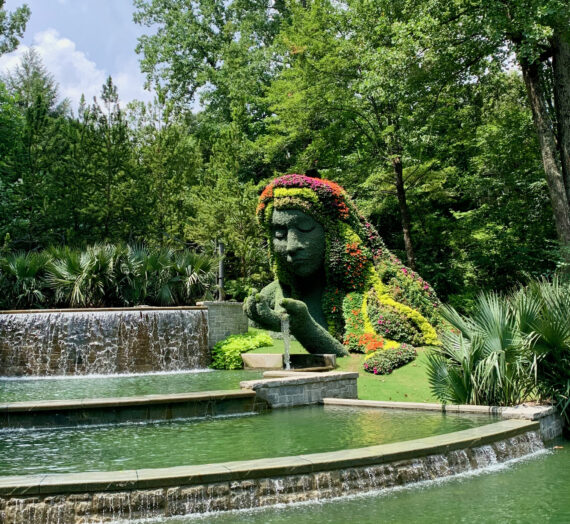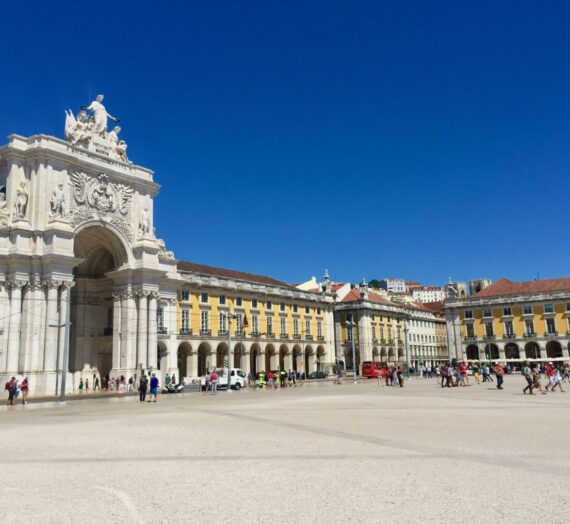One of the best ways to see a country is to drive through it. One great country to explore on a road trip is Italy.
On the road, you have the freedom to visit any town you’d like and make as many pit stops as you please. You’re free to move at your own pace and travel as slowly or quickly as you want. You’re treated to views of the countryside, small towns, and big cities as you cruise along the highway.
Growing up in the western United States, road trips were an essential part of life. Summers here are spent driving to National Parks, beach towns, and mountain lakes. Without the hassle of airports or schedules, we go where we want and enjoy the journey.
Of course, this love of car travel isn’t solely American. The freedom of road trips can be experienced around the world.

Here we have a road trip guide through Italy, based on one of our own family vacations.
This route balances large cities, ancient ruins, medieval towns, mountain lakes, and seaside villages. The itinerary gives a taste of all that Italy has to offer.
So, andiamo — or “let’s go!” Here’s your Italy road trip travel guide.

Home Base: Rome
Your home base for this road trip adventure is Rome. Flights are numerous and can be affordable to the Italian capital. Plus, you simply must see Rome when you visit Italy. In order to balance your time throughout your destinations, plan to only spend a couple days there.
Rome, nicknamed the Eternal City, is like a massive open air museum. The centuries are layered upon each other, all leaving their mark on the city.
If you’re in Rome for a short time, you’ll probably spend most of it in the city center. There are plenty of unmissable sights: the Colosseum, the Roman Forum, the Pantheon, the Trevi Fountain, the Spanish Steps, and so on. Prioritize the ones you feel that you can’t miss, and make sure to leave yourself enough free time. Of course you’ll be tempted to jam pack your schedule and see everything, but part of the beauty of Rome is in aimlessly wandering its streets.
When in Rome, select a few top things to see, and balance it out with plenty of pasta, gelto, and coffee breaks.

Positano (Plus Pompeii and Capri)
On this road trip through Italy we’re going to go a bit south before turning around and going north. It sounds weird, but to get a taste of several different parts of the country, the expedition is worth it.
From Rome, head south toward Positano on the Amalfi Coast.

Pompeii
Along the way, make a pit stop for Pompeii. At about 240 kilometers (150 miles) from Rome to Pompeii, it’s about a two and a half hour drive.
The town of Pompeii was destroyed, yet preserved, by the eruption of Mount Vesuvius in the year 79. While records of the city survived, its location was unknown until its rediscovery in the 18th century. Pompeii underwent extensive excavations over several decades, offering glimpses of ancient Roman life.
Today, visiting Pompeii gives you an idea of what life in the Roman town was like. You can stroll the streets and explore the homes. Ruins of restaurants with takeout windows, athletic facilities, and entertainment amphitheaters fill the town. Make sure to stop at this historic site on your adventure, and enrich your time there by taking a guided tour.
Positano
After Pompeii, it’s time to get back on the road and head to Positano. It’s only about 35 km, or 21 miles, but the drive takes about an hour.
Driving along the Amalfi Coast isn’t exactly a relaxing experience. Narrow roads wind along the sides of cliffs above the sea, with huge tour buses flying around the curves. Despite the hair-raising journey, a serene destination awaits you.
Positano is a small town home to about 4,000 people on the Italian coast. Despite its influx of tourists, Positano is still a magical town. Its colorful buildings and iconic dome roofs cover the mountainside. Narrow stone avenues wind throughout the town.
In Positano, there’s not much to do but eat, drink, and enjoy the view. Relax on the beach, wander the streets, and try some local seafood.
While in Positano, however, you can also take a day trip to Capri.

Capri
Capri is an island in the Tyrrhenian Sea, reachable by boat from the Amalfi Coast.
The island was once home to Roman emperor Tiberius, where he lived permanently as he ruled Rome. Capri has played host to a multitude of historical figures and celebrities in its time. Today it’s a popular tourist destination with the famous Blue Grotto and wonderful views.
(If you’d prefer not to bother with all the hoopla of getting to Positano, Sorrento is also a wonderful town in this area that’s much more easily accessible.)

Siena
The next stop on this road trip through Italy is Siena.
From the Positano, head north to Siena. The 480-kilometer drive typically takes between five to six hours. If you’re not used to road trips, this may sound like a long while. However, the route guides you from the Amalfi Coast up through Tuscany, treating you to a particularly scenic journey.
Siena is a town in central Italy, characterized by its medieval buildings and surrounding wall. The city is centered around its main square, Piazza del Campo, where the Palio di Siena horse race takes place every summer. Siena is divided into 17 districts and home to about 50,000 people.
Located in the province of the same name, Siena is a beautiful place to explore. Wander its cobblestone avenues and take in its medieval architecture. Enjoy a drink in the Piazza del Campo and admire the 14th century clock tower rising above the city. If you happen to be there around the time of the Palio, be ready for a town bustling with activity.

Lake Como
After Siena, it’s time to continue this Italy road trip by heading north to Lake Como.
With nearly five hours in the car to get from one to the other, this leg of the trip is on the longer side as well. However, this time is well spent driving through the Tuscan countryside up into the foothills of the Italian Alps. It’s perhaps the most picturesque portion of the route.
Known for its classic villas and famous residents, Lake Como is a long, thin, three-fingered lake near the base of the Alps. The deep blue water is framed by large, pastel-colored homes and towering mountains.
There are several towns around the lake where you can stay. While all have their pros and cons, you can’t go wrong with Bellagio.
Bellagio is a lakeside village filled with colorful buildings and picturesque views. Here, all you’ve got to do is relax. Spend your time swimming, sunbathing, walking around town, and eating lots of food. Don’t miss out on the local cuisine, like fish caught fresh from the lake, while you’re there.
In order to see more of the area, take a boat trip around to the other lakeside towns. It’s a convenient way to explore the other towns, plus enjoy those gorgeous lake views.
It’s not easy leaving Lake Como, but more water and sunshine await you at the next stop.

Cinque Terre
From Lago di Como, begin heading south again to Cinque Terre. Cinque Terre — “five lands,” or “five earths” in English — is a series of villages along the Italian Riviera. The five towns are Monterosso al Mare, Vernazza, Corniglia, Manarola, and Riomaggiore.
Like the Amalfi Coast, driving around Cinque Terre is no picnic. Here, you must traverse the landscape on old, winding seaside roads. There aren’t a ton of cars like the Amalfi Coast, but the upkeep is inconsistent and the roadways can be confusing.
Monterosso al Mare
This is one of the reasons to opt to stay in Monterosso al Mare, the first of the five villages. You can’t drive your car into town, but there are parking lots at the top of the village where you can leave your car. You won’t need it during the rest of your time in Cinque Terre, anyway.
Monterosso is a small town separated into a new section and and old section. The two are connected by a tunnel, so it’s easy to go between them.
In Monterosso, you’ll spend most of your time by the sea. Head to the beach, swim in the ocean, and soak up the sun. Make sure to have lunch near the beach and try some local seafood pasta, followed by limoncello. There are a few sights to see in town as well, such as the Giant of Neptune statue at the far end of the beach.
When in Cinque Terre, you also must see some of the other villages. There is a train the connects the five villages, so you’re free to explore all the towns from Monterosso without hopping back in the car.
There’s also a hiking trail that connects them all, but depending on the time of year and if there has been any recent damage, some sections might be closed. However you are able to go about it, don’t miss the opportunity to check out Vernazza, Corniglia, Manarola, and Riomaggiore.
Pisa
On your way back to Rome, make a pit stop in Pisa. From Monterosso al Mare, it’s just about an hour and a half by car to Pisa. Then, it’s about a four-hour drive from Pisa to Rome. If you don’t mind long car rides you can easily stop here just for a bit, but if you’d prefer to break up the drive, you can also stay the night.
In Pisa, of course, the main attraction is the leaning tower. As the city’s primary sight, be prepared for crowds. There are tourists everywhere, taking photos in various poses with the tower (licking it like ice cream, pretending to hold it up, etc.) and roaming around in groups.
In spite of it all, coming to Pisa allows you to see one of the most famous buildings in the world. Standing there, staring up at this grand tower that looks to be falling over, you can’t help but be in awe.
All in all, it’s a great experience to see such a famous sight, so stopping here is worth it. Just be prepared for the crowds that await you.

Back Home to Rome
Finally, conclude your Italy road trip by heading back to Rome.
As the saying goes, “all roads lead to Rome.” After stopping to see the leaning tower, get on the highway and head back to Roma. If you have any time left at the end of your trip, explore some of the city’s lesser visited, more relaxing places.

Driving Tips/Practicalities
Driving in a foreign country comes with its own set of difficulties.
Getting used to driving in a new country can be stressful. Navigating the traffic circle around the Arc de Triomphe in Paris or traversing the winding roads of the Amalfi Coast are nerve-wracking experiences, for instance. From renting a car to getting around, there’s plenty to plan before your trip.
Rental Cars
When it comes to renting a car, there is a lot to consider. Which company would you like to use? How large do you need the vehicle to be? Are you comfortable driving a manual car? When and where will you pick up and drop off the car? As with most things, the decisions may come down to comfort and convenience versus budget.
For instance, a convenient way to get your car is at the airport right when you land. However, with this itinerary, then you have to drive your car into Rome and let it sit in your hotel parking lot for a couple days while you explore the city. But then your car is ready and waiting for you first thing in the morning when you want to set out from the capital city. On the other hand, you could pick up a car from a rental agency in the city, but you’ll have to negotiate getting there and this takes time away from sightseeing or getting on the road early to your next destination. Everyone has a different preference here, and you have to go with what’s comfortable for you.
Before you pick up your car, make sure you have the necessary documentation to drive in Italy. In the U.S., you can easily get an International Driver’s License from AAA, so long as you are a licensed driver.
Getting Around
Getting around is easier these days with Google Maps and GPS systems, but never rely solely on technology. Always make sure you have paper maps, printed directions, and written information about your destinations.
Sometimes the technology gets confused and you end up driving in circles in the Bavarian countryside or cautiously driving down tiny side streets in Naples (yes, these things happened to us).
Be Prepared
All in all, just be prepared.
Make sure you know your budget and what you’re comfortable with before you set out. Carry back up, hard copies of all the information you might need.
Road trips come with freedom, but that means they also come with responsibility. If you’ve got everything you need, you can spend your time well.
—

When you take a road trip, you truly get to enjoy the journey and the destination. You’re free to travel at your own pace, pausing whenever you like. It’s one of the best ways to really get to know a country.
Of course, there’s so much more to Italy than you can see in a couple weeks. With this route, however, you’ll find a taste of it all with a balance of charming seaside villages, picturesque mountain lakes, beautiful medieval towns, famous landmarks, and ancient ruins.
Cin cin!







